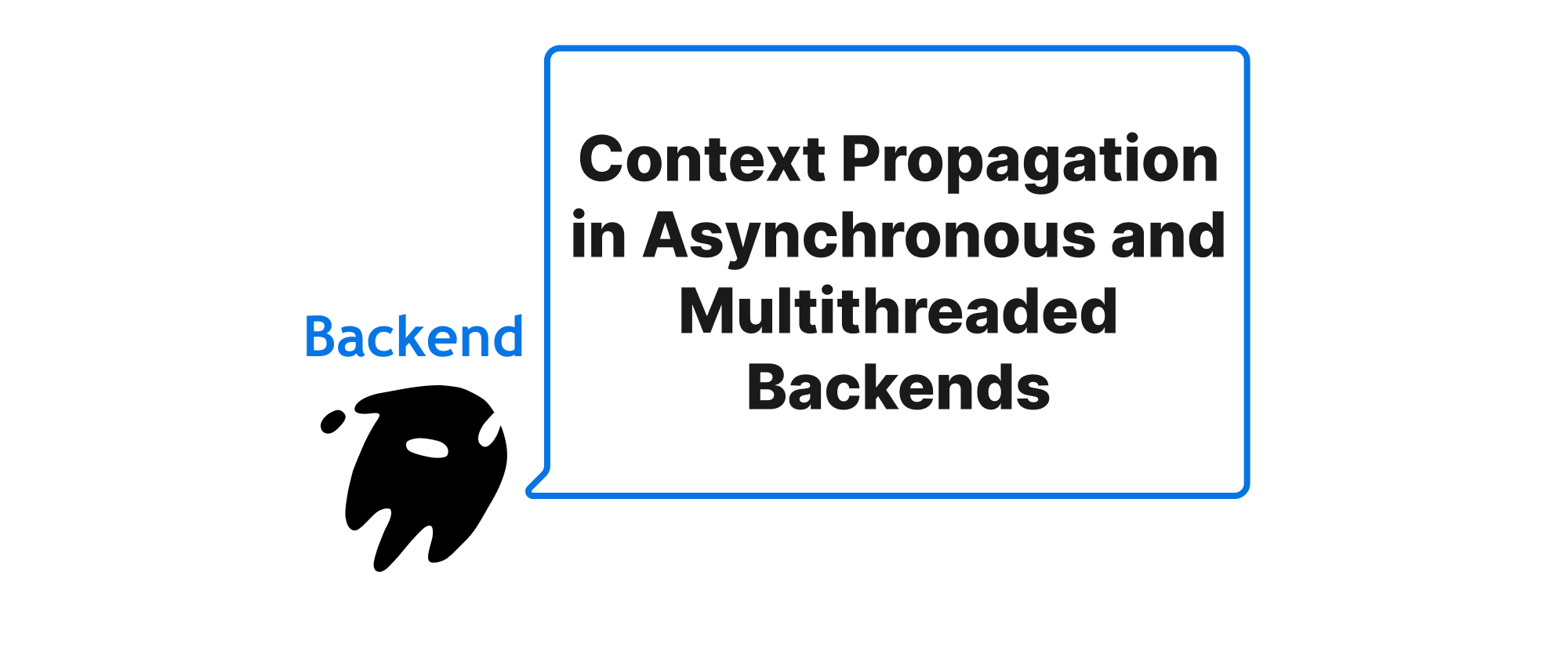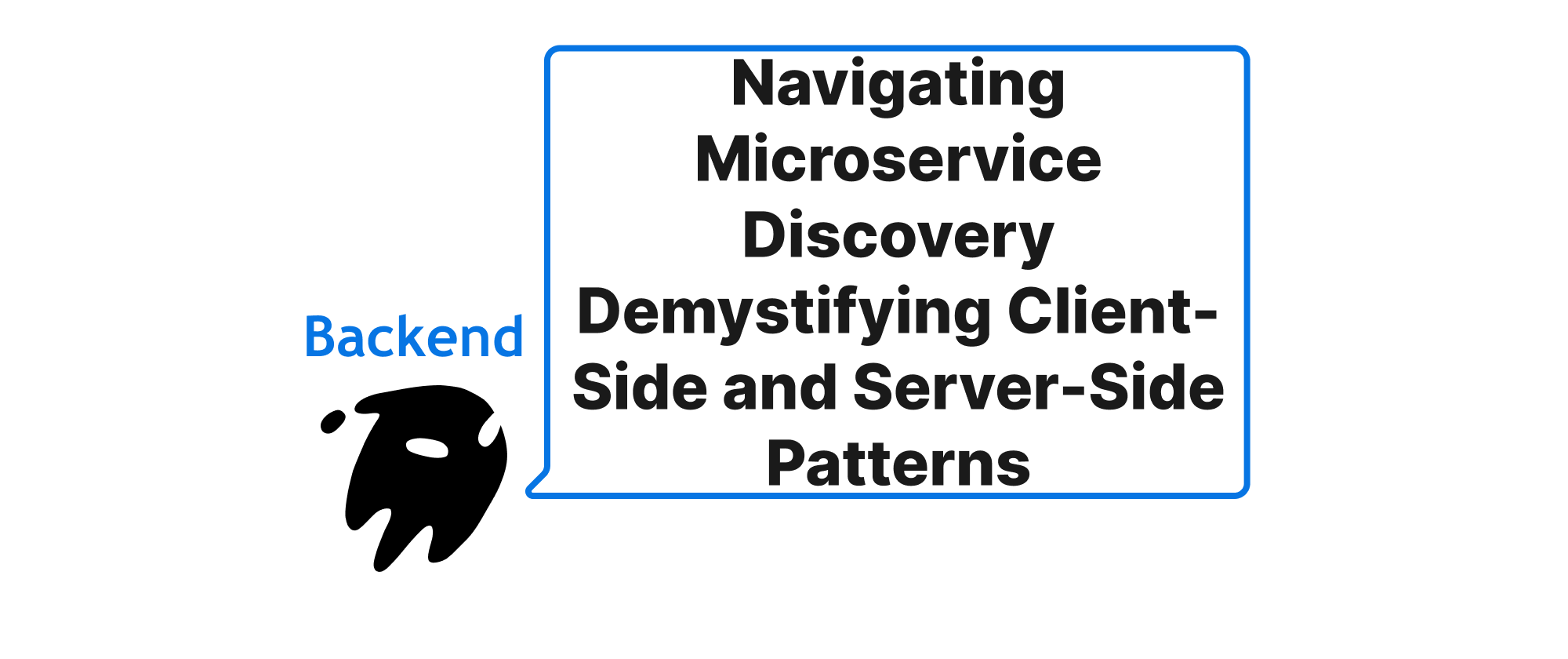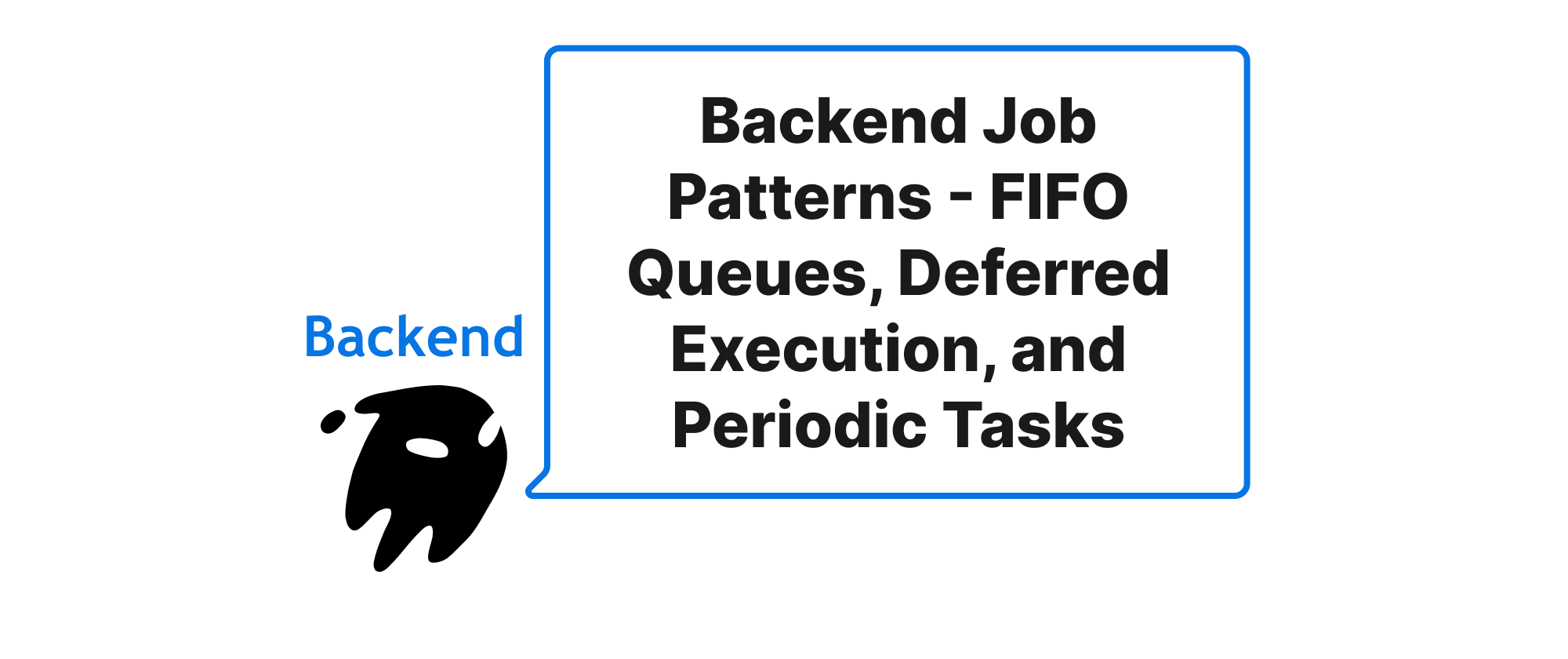Context Propagation in Asynchronous and Multithreaded Backends
Emily Parker
Product Engineer · Leapcell

Introduction
In the intricate world of modern backend systems, where microservices communicate, asynchronous operations abound, and multithreading is a staple for performance, maintaining a consistent understanding of a user's request journey can feel like navigating a labyrinth blindfolded. Imagine a single user request kicking off a cascade of events: interacting with a database, calling other microservices, and processing data concurrently. Without a reliable mechanism to track this entire flow, debugging becomes a nightmare, performance bottlenecks remain hidden, and an accurate understanding of system behavior is elusive. This is precisely where the concept of request context propagation shines. Ensuring vital information, such as a unique Trace ID, follows the request through every hop, thread switch, and asynchronous boundary is paramount for observability, troubleshooting, and even security. This article will explore the challenges and various strategies for safely and reliably propagating request context in these complex environments.
Core Concepts
Before diving into the "how," let's establish a common understanding of key terms that form the foundation of our discussion:
- Request Context: This refers to a collection of data associated with a specific incoming request. It might include information like the Trace ID (a unique identifier for the entire request across services), Span ID (a unique identifier for a single operation within a request), user authentication details, tenant ID, language preferences, or any other data relevant to processing that particular request.
- Trace ID: A globally unique identifier that links all operations (spans) belonging to a single end-to-end user request, regardless of which services or threads are involved. It's crucial for distributed tracing.
- Asynchronous Environment: A system where operations can be initiated without waiting for their completion. This often involves callbacks, promises, futures, or message queues, enabling non-blocking execution and improved resource utilization.
- Multithreaded Environment: A system where multiple threads of execution run concurrently within a single process. While threads share memory, proper synchronization and data isolation are essential to prevent race conditions and ensure data integrity.
- Context Propagation: The act of transferring or making available the request context from one execution unit (e.g., a thread, a function call, a service) to another, especially across asynchronous boundaries or thread switches.
- Thread-Local Storage (TLS): A mechanism by which each thread has its own unique instance of a variable. While useful for simple thread-specific data, its effectiveness for complex context propagation across async/await or thread pools can be limited without careful management.
- Structured Concurrency: A programming paradigm that provides constructs to manage the lifecycle of concurrent tasks, making it easier to reason about their execution flow and ensure context is propagated correctly. Examples include Java's
StructuredTaskScopeor Go'scontextpackage.
The Challenge of Context Propagation
The fundamental challenge arises because traditional methods of passing data (function arguments) break down when execution jumps between threads or is deferred asynchronously. When a request enters a system, it typically starts on one thread. If subsequent operations are offloaded to a thread pool, or if async/await patterns are used, the original thread's local context is lost unless explicitly carried over.
Consider a simple scenario: A web server receives a request. It extracts a Trace-ID from the HTTP header. Then, it needs to perform two database queries in parallel. Each query runs on a separate thread from a thread pool. After the queries complete, the results are aggregated, and the response is sent back. If the Trace-ID isn't explicitly passed to the database query threads, the logs generated by those queries will lack the crucial identifier, making it impossible to link them back to the original request.
Strategies for Context Propagation
Several strategies address this challenge, each with its own trade-offs.
1. Explicit Parameter Passing
The most straightforward, albeit often verbose, method is to explicitly pass the context object as an argument to every function or method that needs it.
Principle: The context object becomes an explicit part of the function signature.
Example (Python - simplified):
import uuid def process_request(trace_id, user_data): print(f"[{trace_id}] Starting request processing for {user_data}") db_result_1 = perform_db_query(trace_id, "query_A") db_result_2 = perform_external_call(trace_id, "service_B") return f"[{trace_id}] Processed: {db_result_1}, {db_result_2}" def perform_db_query(trace_id, query_string): print(f"[{trace_id}] Executing DB query: {query_string}") # Simulate DB operation return f"DB_Result_for_{query_string}" def perform_external_call(trace_id, service_name): print(f"[{trace_id}] Calling external service: {service_name}") # Simulate external API call return f"External_Result_from_{service_name}" # Incoming request incoming_trace_id = str(uuid.uuid4()) response = process_request(incoming_trace_id, {"username": "Alice"}) print(response)
Pros:
- Highly explicit and easy to understand.
- No hidden magic; data flow is clear.
Cons:
- Can lead to "context pollution" of function signatures, especially with deep call stacks.
- Easy to forget to pass the context, introducing bugs.
- Doesn't automatically handle library calls that don't expect the context parameter.
2. Thread-Local Storage (TLS)
TLS allows each thread to have its own copy of a variable. This can be used to store context that is specific to the "current" thread.
Principle: The context is stored in a thread-local variable and retrieved when needed by code running on that same thread.
Example (Java):
import java.util.UUID; import java.util.concurrent.ExecutorService; import java.util.concurrent.Executors; import java.util.concurrent.Callable; public class ThreadLocalContext { private static final ThreadLocal<String> currentTraceId = new ThreadLocal<>(); public static void setTraceId(String traceId) { currentTraceId.set(traceId); } public static String getTraceId() { return currentTraceId.get(); } public static void clearTraceId() { currentTraceId.remove(); } public static void businessLogicA() { System.out.printf("[%s] Executing businessLogicA%n", getTraceId()); // ... } public static void main(String[] args) throws InterruptedException { String mainTraceId = UUID.randomUUID().toString(); setTraceId(mainTraceId); System.out.printf("[%s] Main thread started%n", getTraceId()); ExecutorService executor = Executors.newFixedThreadPool(2); // This task will run on a new thread from the pool executor.submit(() -> { // Here, getTraceId() would return null by default on a new thread // unless explicitly set or inherited. System.out.printf("[%s] Async task 1 started (expected null if not propagated)%n", getTraceId()); // How do we get mainTraceId here? // manual propagation needed: String current = getTraceId(); // null setTraceId("ASYNC-" + mainTraceId.substring(0, 8)); // New trace ID for async context System.out.printf("[%s] Async task 1 trace ID set%n", getTraceId()); clearTraceId(); // Clean up }); // Another direct thread use (similar issue) Thread t2 = new Thread(() -> { System.out.printf("[%s] Thread 2 started (expected null)%n", getTraceId()); setTraceId("THREAD2-" + mainTraceId.substring(0, 8)); System.out.printf("[%s] Thread 2 trace ID set%n", getTraceId()); clearTraceId(); }); t2.start(); t2.join(); // After async tasks, main thread's context should still be there System.out.printf("[%s] Main thread finished async calls%n", getTraceId()); clearTraceId(); executor.shutdown(); } }
Pros:
- Avoids parameter pollution. Code can implicitly access the context.
- Relatively simple for synchronous, single-threaded execution per request.
Cons:
- Major Drawback for Asynchronous/Multithreaded: TLS variables are inherently tied to the current thread. When an operation switches threads (e.g., in a thread pool, async/await, or reactive programming), the context stored in the original thread's TLS is not automatically transferred to the new thread. This leads to lost context unless explicit "inheritance" mechanisms are used.
- Requires careful cleanup (
remove()orclear()) to prevent memory leaks or context bleed if threads are reused.
3. Contextual Data Structures (e.g., Go's context.Context)
Languages like Go have first-class support for context propagation through dedicated types. This pattern encourages an explicit, yet less verbose, way to pass context.
Principle: A Context object is passed down the call chain. It's immutable and can carry arbitrary key-value pairs. New contexts can be derived from existing ones, inheriting values and adding new ones.
Example (Go):
package main import ( "context" "fmt" "time" ) // A custom type for context keys to avoid collisions type traceIDKey string const keyTraceID traceIDKey = "traceID" func generateTraceID() string { return fmt.Sprintf("trace-%d", time.Now().UnixNano()) } func logWithContext(ctx context.Context, message string) { if traceID := ctx.Value(keyTraceID); traceID != nil { fmt.Printf("[%s] %s\n", traceID, message) } else { fmt.Printf("[No-Trace] %s\n", message) } } func dbOperation(ctx context.Context, query string) { logWithContext(ctx, fmt.Sprintf("Executing DB query: %s", query)) // Simulate async DB call time.Sleep(50 * time.Millisecond) logWithContext(ctx, fmt.Sprintf("DB query %s finished", query)) } func externalServiceCall(ctx context.Context, service string) { logWithContext(ctx, fmt.Sprintf("Calling external service: %s", service)) // Simulate async external call time.Sleep(100 * time.Millisecond) logWithContext(ctx, fmt.Sprintf("External service %s call finished", service)) } func processRequest(parentCtx context.Context, userData string) { ctx := context.WithValue(parentCtx, keyTraceID, generateTraceID()) // Add a new trace ID to context logWithContext(ctx, fmt.Sprintf("Starting request processing for %s", userData)) // Simulate concurrent operations using goroutines done := make(chan struct{}) go func() { defer func() { done <- struct{}{} }() dbOperation(ctx, "SELECT * FROM users") // Pass context to goroutine }() go func() { defer func() { done <- struct{}{} }() externalServiceCall(ctx, "UserService") // Pass context to goroutine }() // Wait for concurrent operations to complete <-done <-done logWithContext(ctx, "Request processing finished") } func main() { // Create a background context for the application's lifetime appCtx := context.Background() processRequest(appCtx, "Alice") time.Sleep(200 * time.Millisecond) // Give time for goroutines to finish fmt.Println("---") processRequest(appCtx, "Bob") }
Pros:
- Explicit and readable, but less verbose than pure explicit passing due to
WithValuepattern. - Naturally handles concurrency: context is an argument to goroutines/functions.
- Supports cancellation and deadlines, making it powerful for managing complex flows.
- Enforced by convention in Go, becoming idiomatic.
Cons:
- Requires language-level support or library adoption.
- Still requires passing the context object, though less intrusive than many individual parameters.
- Can be misused if not understood, leading to deeply nested
context.WithValuecalls if not careful.
4. Asynchronous Context Libraries / Structured Concurrency (e.g., Java's StructuredTaskScope, Project Loom ScopedValue, Kotlin CoroutineContext, Python contextvars)
These approaches aim to solve the TLS problem for asynchronous and multithreaded environments by automatically carrying context across execution boundaries.
Principle: These libraries or language features provide mechanisms to capture the current execution context and propagate it automatically to child tasks, threads from a pool, or continuations of async operations.
Example (Python contextvars):
import asyncio import contextvars import uuid # Define a ContextVar for our trace ID current_trace_id = contextvars.ContextVar('trace_id', default='no_trace_id') async def db_operation_async(query_string): trace_id = current_trace_id.get() # Get context automatically print(f"[{trace_id}] Async DB query: {query_string}") await asyncio.sleep(0.05) # Simulate async DB call print(f"[{trace_id}] Async DB query {query_string} finished") async def external_call_async(service_name): trace_id = current_trace_id.get() # Get context automatically print(f"[{trace_id}] Async external service: {service_name}") await asyncio.sleep(0.1) # Simulate async external call print(f"[{trace_id}] Async external service {service_name} call finished") async def process_request_async(user_data): # Set the trace ID for the current async task execution token = current_trace_id.set(str(uuid.uuid4())) trace_id = current_trace_id.get() print(f"[{trace_id}] Starting async request processing for {user_data}") # These async calls will automatically inherit the current_trace_id await asyncio.gather( db_operation_async("SELECT * FROM users_async"), external_call_async("AsyncUserService") ) print(f"[{trace_id}] Async request processing finished") current_trace_id.reset(token) # Clean up context async def main(): await process_request_async("Alice") print("---") await process_request_async("Bob") if __name__ == '__main__': asyncio.run(main())
Example (Java - Project Loom ScopedValue - simplified for conceptual understanding):
import java.util.UUID; import java.util.concurrent.ExecutorService; import java.util.concurrent.Executors; import jdk.incubator.concurrent.ScopedValue; // Requires Java 21+ with Loom public class ScopedValueContext { // Define a ScopedValue private static final ScopedValue<String> TRACE_ID = ScopedValue.newInstance(); public static void dbOperation() { System.out.printf("[%s] Executing DB operation%n", TRACE_ID.get()); // Simulate DB call } public static void externalServiceCall() { System.out.printf("[%s] Calling external service%n", TRACE_ID.get()); // Simulate external API call } public static void main(String[] args) throws InterruptedException { ExecutorService executor = Executors.newFixedThreadPool(2); // Process request 1 String traceId1 = UUID.randomUUID().toString(); // Bind the ScopedValue for this task and any sub-tasks launched within it ScopedValue.where(TRACE_ID, traceId1).run(() -> { System.out.printf("[%s] Starting request 1%n", TRACE_ID.get()); executor.submit(() -> { // This callable will *automatically* inherit the context if Loom is used correctly dbOperation(); }); executor.submit(() -> { externalServiceCall(); }); // In a real Loom application, Virtual Threads would naturally inherit the context. // With traditional thread pools, careful wrapping/manual propagation might still be needed // if the executor doesn't integrate directly with ScopedValue. // structured concurrency (StructuredTaskScope) makes this much cleaner for pooled threads too. }); Thread.sleep(200); // Give tasks time to run // Process request 2 String traceId2 = UUID.randomUUID().toString(); ScopedValue.where(TRACE_ID, traceId2).run(() -> { System.out.printf("[%s] Starting request 2%n", TRACE_ID.get()); executor.submit(() -> dbOperation()); }); executor.shutdown(); executor.awaitTermination(1, java.util.concurrent.TimeUnit.SECONDS); } }
Pros:
- Automatic Propagation: The most significant advantage is that the context is automatically propagated across async/await boundaries or to new threads launched within a structured concurrency scope (e.g.,
StructuredTaskScopein Java,contextvarsin Python). This largely eliminates the need for manual passing or explicit inheritance. - Cleaner code: Reduces boilerplate and improves readability.
- Less error-prone: Reduces the chance of forgetting to pass context.
Cons:
- Requires language/runtime support or a mature library ecosystem.
- Can have a learning curve to understand how it interacts with different concurrency primitives.
- Overhead might be slightly higher than explicit passing due to context switching and management, though often negligible for most applications.
Best Practices and Recommendations
-
Choose the Right Tool for Your Language/Framework:
- Go: Always use
context.Context. It's idiomatic and robust. - Python: Leverage
contextvarsfor asynchronous code. For multithreaded code, be mindful of how thread pools interact withcontextvars. Libraries likeopentelemetry-pythonhandle this well. - Java: For traditional multi-threading, enhance
ThreadLocalwith custom executor wrappers that explicitly copy context. For modern Java (21+),ScopedValuewithStructuredTaskScopeis the recommended path for structured concurrency and automatic context propagation. Reactive frameworks often have their own context mechanisms (e.g., Reactor'sContext).
- Go: Always use
-
Clean Up Context: When using TLS or mechanisms that require explicit setup/teardown, always ensure the context is cleared at the end of a request or task. This prevents context bleed between reused threads and avoids memory leaks.
-
Start Context at the Edge: Introduce the context (especially the
Trace ID) as early as possible in the request lifecycle, typically at the API gateway or the entry point of your service. -
Enrich Context Incrementally: Add relevant information (e.g., user details, tenant ID) to the context as it becomes available during processing.
-
Standardize Context Keys: If you're using a generic context map, define and document standard keys to ensure consistency across your codebase and services.
-
Integrate with Observability Tools: Ensure your context propagation strategy aligns with distributed tracing systems (e.g., OpenTelemetry, Zipkin, Jaeger). These systems often provide libraries that integrate seamlessly with the discussed context propagation mechanisms.
Conclusion
Safely and reliably passing request context in asynchronous and multithreaded backend environments is not merely a good practice; it's a foundational requirement for building observable, maintainable, and debuggable systems. While explicit parameter passing offers simplicity, modern programming paradigms and libraries dedicated to structured concurrency and asynchronous context management, such as Go's context.Context or Python's contextvars, provide far more robust and less intrusive solutions. By adopting the appropriate context propagation strategy for your technology stack, you empower your backend services to understand the full journey of every request, transforming complex system interactions into transparent, traceable operations. Getting context propagation right means turning the labyrinth of distributed systems into a clearly mapped journey for your requests.


